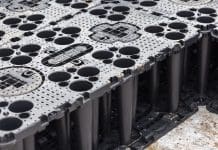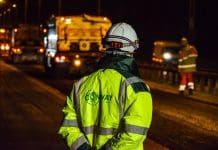Michelle Scarsbrook, commercial sector director at Sopra Steria, explores how to minimise disruption to our roads by evolving street works through data and digital twins
Following the launch of Street Manager last year to modernise the operation of street works in the UK, the Department for Transport is currently aiming to push through additional legislative reforms that will further enhance processes in areas such as permit schemes and the use of data.
While these changes are of course positive, we are poised for a new era of road disruption over the next few decades as work to underpin the UK’s ambitious plans of becoming net zero, creating smarter cities, and rolling out 5G, require immediate change to our infrastructure. And the critical question: are our street work processes really cut out to cope?
If you think about it, the country is already plagued by traffic jams due to street works, which are often delayed too. With much change to infrastructure on the horizon, stakeholders must work smarter if they want to ensure the lives of citizens are not negatively impacted by the increase in work. Completing jobs on time and within budget are of course also good for business.
So, what should organisations undertaking street works be focusing on?
Harnessing data to limit disruption
We have already seen some businesses develop a more automated and data-informed approach to jobs to work smarter. While this helps to drive greater efficiencies and minimise disruption to roads, working this way has the added benefits of supporting the UK’s drive towards a carbon neutral and connected country too.
A great example of an organisation that’s harnessed data is M Group Services. In fact, it’s been operating this way for the last 10 years and is currently on target to deliver over 2 million street works transactions in 2021. This is largely down to the introduction of ground-breaking Robotic Process Automation (RPA) technology to retrieve asset location information and handle the high volume, repeatable tasks, as well as validation and grid plotting, noticing/permitting and registration activity.
Key to the success of M Group Services is its team of highly skilled and industry knowledge-rich individuals, both internal and external, which have helped to deliver jobs on time and to budget, while also creating substantial savings from driving efficiencies in the way they work. In turn, this has helped to minimise disruption to both the organisations involved with the street works but also to the general public who use the highways for their everyday activities.
Digitisation is of course critical, but to ensure its success organisations shouldn’t overlook the workforce. Leaders must ensure their teams are trained and properly accredited to be effective in the digital future. Additionally, firms can also work with third-party organisations to help them overcome barriers to digital change and mitigate against the hidden costs of innovation.
Embracing digital twins to improve collaboration
Being data-driven and data literate is a great first step for organisations involved in street works. However, to reach the government’s lofty goals, we must see the sector evolve further and embrace even more emerging technologies, including digital twins, as well as 5G and the Internet of Things (IoT).
Digital twins will be crucial to the future success of street works. This next-gen tech will help to open up opportunities for the sector to drive greater efficiencies and improvements, minimise disruption and improve customer experience.
Simply put, a digital twin is a replica of a real-world asset such as a car, a road, or an entire city. It differs from a Building Information Model (BIM) since it can be used as an up-to-date asset management system, syncing with the real-world environment through sensors, processes, and other data sources, and providing a comprehensive and dynamic digital replica of a real-world asset.
With all the data affecting an asset’s operations in one place, there is greater collaboration between stakeholders – from utility companies to highways management – and better asset control and management, helping to limit errors and re-work.
To put this into a real-world scenario, take a recent roadblock in Bradford which was caused by a company working without a permit, leaving the council unable to resolve the issue as it had no prior knowledge of the work. This sort of situation would have been easily avoided using a digital twin. If all stakeholders in the street works process had bought into the digital twin, the work wouldn’t have been unplanned.
In fact, it may have been potentially unnecessary. Through a combination of sensors, analytics, and the digital twin, the sector has the perfect recipe to start working towards predictive and proactive maintenance to reduce street works activity.
We’re now seeing some organisations taking this one step further and looking at self-repairing concepts, using a mix of the digital twin and robotics to eliminate all unnecessary street works. For example, the University of Leeds is working with the local council and other institutions under the Self Repairing Cities initiative to use a mix of robotics and the digital twin to eradicate unnecessary street works by 2050.
In summary
To meet the UK’s net zero and digital goals, it is inevitable there will be an increase in street works as part of wider infrastructure improvements. However, organisations can use data and emerging technologies such as digital twins, combined with upskilling its workforce in digital, to minimise potential disruption to the public and drive greater efficiencies in jobs.
Ultimately, greater collaboration between project stakeholders will be critical if the sector is to deliver a strong, stable underground infrastructure capable of delivering a connected future that adds to the quality of life of UK citizens.













